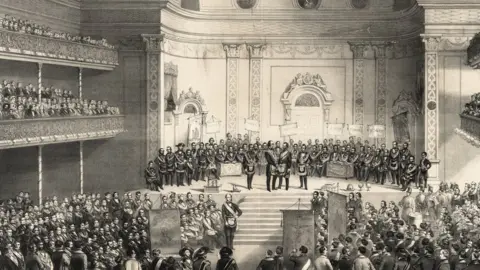Start Now with Detailed Instructions on How to Join a Masonic Lodge
Start Now with Detailed Instructions on How to Join a Masonic Lodge
Blog Article
Checking Out the Mysteries of the Freemason: What You Need to Know
The Freemason, a term frequently shrouded in intrigue and dispute, stands for an intricate tapestry of historical fact and modern-day myth. Developed in the late 18th century, this secret culture was at first rooted in the Enlightenment's perfects yet has since become identified with conspiracy theory theories about elite control. As we navigate the beginnings, crucial figures, and the raw comparison between myth and reality, one must consider how these stories affect modern assumptions of power and privacy. What may be revealed via a closer evaluation of these elements can challenge long-held presumptions regarding the darkness that remain in our society.
Beginnings of the Freemason
The origins of the Freemason are steeped in a mix of historical intrigue and ideological eagerness. Established in 1776 in Ingolstadt, Bavaria, by Adam Weishaupt, the group was originally created as a secret society targeted at promoting Enlightenment suitables such as reason, secularism, and the separation of church and state. Weishaupt, a professor of canon legislation, sought to challenge the prevailing authority of the church and state, which he deemed overbearing establishments suppressing intellectual and personal flexibility.
The Freemason looked for to hire prominent participants from numerous societal sectors, consisting of national politics, academic community, and the arts, to cultivate a network devoted to these Knowledge principles. The society run under a shroud of privacy, utilizing coded language and rituals to safeguard its members from mistreatment, specifically provided the repressive environment of the moment. However, the Freemason encountered considerable opposition from both governmental authorities and religious institutions, which viewed the team as a threat to their power.
Secret Figures and Members
That were the essential figures that shaped the Freemason's early impact and instructions? The Bavarian Freemason, founded in 1776 by Adam Weishaupt, emerged as an action to the oppressive societal frameworks of the time.
An additional considerable number was Johann Gottlieb Fichte, a popular philosopher whose concepts on nationalism and education resonated with the Freemason's objectives. Although Fichte was not a formal member, his philosophical supports influenced the group's belief. Additionally, numbers like the writer and theorist Johann Wolfgang von Goethe were associated with the broader intellectual movements of the time, although their direct participation with the Freemason remains discussed.
These key numbers added to the Freemason's early instructions, pressing the boundaries of political and social idea, while their collective initiatives intended to challenge well established norms and cultivate a climate of dynamic change in Europe.
Misconceptions vs. Reality
Many misunderstandings border the Freemason, commonly blending reality with fiction in a means that obscures its real nature. The concept that the Freemason proceeds to put in considerable influence over world occasions is a misconception - how to become a freemason.
Another prevalent myth is that the Freemason makes up a network of elite people manipulating global affairs. Actually, several conspiracy theory theories exaggerate the group's relevance, connecting misguided objectives to societal trends and events. read this This has resulted in an oversimplified view of complicated concerns.

Modern Analyses
Contemporary analyses of the Freemason usually mirror broader societal anxieties and a fascination with secrecy and power. This modern lens frequently connects the Freemason with conspiracy theories that suggest a covert elite manages world events, manipulating governments and economies for their own gain. Such narratives use a deep-rooted question of authority, specifically in times of situation or social turmoil.

Furthermore, some modern interpretations mount the Freemason as an allegory for the intricacies of globalization and the interconnectedness of prominent individuals and organizations. This perspective encourages a crucial examination of how power characteristics run in today's world, highlighting the balance in between openness and secrecy in governance and company techniques.
Social Impact and Legacy
Influenced by centuries of intrigue, the social effect and tradition of the Freemason extend much past its historical beginnings. This secret culture, established in the late 18th century, has penetrated different facets of pop culture, from literature and movie to songs and art. The concept of the Freemason has actually progressed into an icon of conspiracy theories, usually standing for a perceived surprise power controling global occasions.
In literature, writers like Dan Brown have woven the Freemason right into complex plots, fascinating readers with motifs of secrecy and power. Movies such as "National Treasure" and "The Da Vinci Code" better continue the attraction of the society, mixing truth with fiction to develop appealing stories.
The Freemason's influence additionally extends right into music, with artists referencing the company to evoke motifs of rebellion and societal review. This portrayal has actually contributed to a fascination with the concept of clandestine teams controlling the levers of power, mirroring societal stress and anxieties concerning authority and transparency.
Inevitably, the Freemason's legacy is a complicated tapestry of misconception and reality, shaping assumptions of secrecy and control in contemporary discussion. Its long-lasting presence in culture emphasizes humanity's perennial mission for recognizing covert realities.
Verdict
The expedition of the Freemason exposes an intricate interaction between historical realities and modern-day myth-making. Established in the Enlightenment age, this society intended to test oppressive structures, yet its legacy has been eclipsed by conspiracy theory concepts that recommend elite manipulation. Comprehending the distinctions in between the initial perfects and modern analyses is important for comprehending the withstanding attraction with the Freemason and its considerable impact on social stories bordering power and privacy in culture.
Report this page